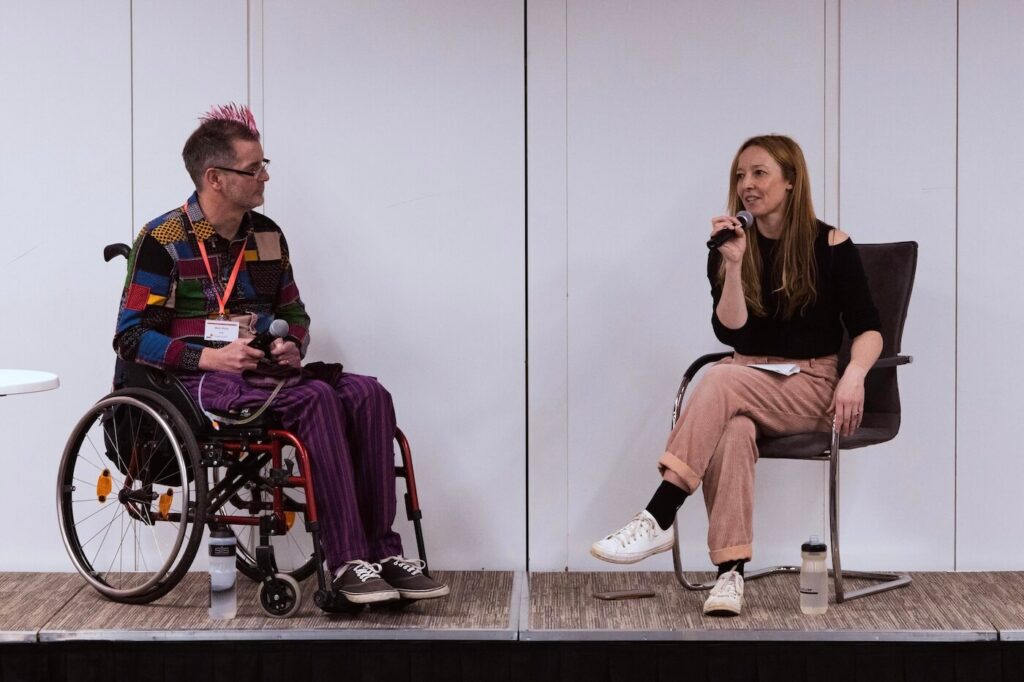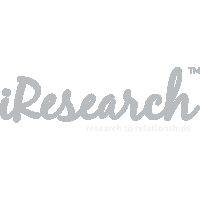
Flying the flag of inclusivity in the workplace requires more than good intentions. Discover how your business can become more inclusive with expert opinions from business owners leading by example.
From creativity to innovation and increased productivity, DEI (diversity, equity, and inclusion) has made positive strides in our world of work over recent years.
But beyond the good intentions of business owners, how much is being done across the marketing industry to level the playing field and provide everyone with fair and equal opportunities?
One LinkedIn survey, comprised of HR professionals and recruiters, found that although 69% of organisations said they were committed to more diverse hiring, only 47% held hiring managers accountable.
So, what’s needed from businesses to take it from a tick-box exercise to defining inclusion as a principle of action?
Today we discuss what businesses/organisations can do to make inclusivity a genuine feature of their company culture.
And we begin with a first-hand example and source of inspiration with Sharon Flaherty and Mark Webb, who were kind enough to speak at our latest B2B Content Marketing Summit.
What inclusion means in the comms industry: The ‘Folk’ effect
In September 2014, Sharon Flaherty founded ‘BrandContent’, a small content agency that went on to win four consecutive ‘Agency of the Year’ awards at the International Content Marketing Awards.
Draped in honours and coming out of their most successful year of growth, it may have been a big surprise for some when Sharon decided to change everything.
Her reason?
To make inclusivity in comms the norm.
“I realised, as the CEO of a creative communications agency, that I could actually do something about this, and I wanted to do something about this… People are calling out for brands to become more inclusive, and as agencies, we have a responsibility to help brands be more inclusive too.”
Sharon Flaherty, CEO of Folk
In changing the name ‘BrandContent’ to Folk, Sharon quickly developed ‘The Real Folk Panel’. This defined group of communication consultants give her business comms expertise and experience while representing different communities as advocates contributing to an overall collective and authentic voice for inclusion.
Mark Webb is part of the Folk movement as a passionate panellist and public speaker. His incredible career that began at Disney in 1992 went on to DSG International before moving to Currys. It was there that Mark was suddenly diagnosed with MS (the invisible disability).
In this situation, many businesses could have taken certain actions to cut corners or take the “supposedly” easy route. But Mark’s experience with Currys showcased the possible positive outcomes when inclusion runs through every thread of an organisation.
After taking a two-week break, Mark returned to a business that had taken the time to learn about his condition. Their collective effort to understand his experiences and support his needs was incredibly refreshing.
There was a collective sense of acceptance and an eagerness to support, communicate and understand from senior to junior roles within the company.
Mark remembers how his management team sat down with him on his return and asked:
“What can we do to support you and help you thrive?”
A big part of inclusion is to have a senior member help with inclusivity, as Sharon is displaying with Folk. Leading from the top is the most effective method for inclusivity, enabling everyone to get on board and lead by example with positive action, conversation, and collaboration.
“Allyship is huge, but so is management. We can work from the top down to create a culture of acceptance and understanding.”
Mark Webb, Public Speaker & Real Folk Panelist
However, showing a willingness to make your business more inclusive is only half the battle. You need to take proactive steps to make it a part of your DNA. And this takes a specific approach.
How to be inclusive in the workplace
According to Sharon and Mark, the one thing holding back brands from becoming more inclusive is the fear of getting it wrong. But the reality is inclusivity is an ongoing evolution. The key is to actually start the process. And once you do, you can incorporate the following three things to promote inclusion in the workplace:
Involve under-represented groups
For business owners to get over their fear of making an inclusivity mistake, they need to begin the conversation with people who represent different minority groups. Like all aspects of business, if you’re not an expert on inclusivity, seek the support of someone who is.
“It’s so cool to talk and D and I, DEI, inclusion, and then just build a ramp without ever consulting the people involved. It’s crucial that we should be invited too.”
Mark Webb, Public Speaker & Real Folk Panelist
The purpose of the Real Folk Panel was to bring different lived experiences and to give minority voices a platform to be heard.
Inclusivity in action forces us to engage with different people we might not have done without the incentive. And for Folk, it has helped enrich the work they provide for their clients with more creativity, empathy and lived experience that matters most when trying to connect with people.
Without under-represented voices, we have no reference or direct experience to advocate for minority and excluded people and communities.
Essentially, it’s vital in creating a more inclusive company culture with a language that communicates the correct values and visions for the future to engage a greater audience.
Digital accessibility
As the working world continues to go digital, so must our inclusivity principles. Because fostering a sense of belonging at your company also includes how you present your business digitally.
Therefore, you need to ask yourself how accessible your website and resources are. For example:
- Do you have colour contrast features?
- Do you have alt text on the images?
- Have you incorporated BSL into your videos?
- Have you included a description of the image at the bottom of your social post?
Not only do these small changes help translate to under-represented groups across your clients, customers, and staff. But it also helps bridge the norm into what we want inclusivity to become.
And if you’re at a stage where you want to update your digital platforms. Design with under-represented groups as part of your process or hire inclusivity experts to design your website.
Don’t be afraid
Finally, try not to let the fear paralyse your inclusivity efforts. In today’s world, we can all be guilty of doing our best not to say the wrong thing. The last thing we want to do is upset or offend anyone. But sometimes, this approach leads to no action. And no action means no changes.
For leaders who want to create inclusive workspaces, we must persevere past the fear of having the conversation, despite how uncomfortable it can make us feel.
As we pointed out with Mark Webb earlier, it was when his management team sat down with him to ask tough questions that significantly impacted his inclusivity.
“There’s a fear of saying the wrong thing. But it’s about progressing the conversation.”
Mark Webb, Public Speaker & Real Folk Panelist
So, regardless of your position or status, the bravery to talk about inclusivity is the first step to making it a reality at your workplace. Whether getting a board member involved or establishing a support group, the best way to become inclusive is to be like Sharon and Mark and lead by example.
Folk is a fantastic representation of a company that doesn’t just talk about diversity but lives and breathes it.
Inclusion and its relationship with content marketing
The final point today is how inclusivity can impact the quality of our content as marketing agencies and businesses. Because by including more authentic voices in our creative departments, we immediately gain greater empathy, character, and imagination.
“I think we’re living in a time where there’s no excuse for brands to not be inclusive and diverse. It’s important to represent an authentic voice of people with lived experiences in marketing and communications”.
Mark Webb, Public Speaker & Real Folk Panelist
Other backgrounds enrich our collective creativity and enhance our consumer perceptions to include a diverse audience across ages, genders, cultures, etc.
In not considering all our differences, we may miss the opportunity for connection and collaboration. After all, it’s the brands unwilling to move forward and embrace change that risks falling behind.
Get more out of your content marketing
Interested in gaining more insights from our B2B Content Marketing Summit? Check out these other articles:






